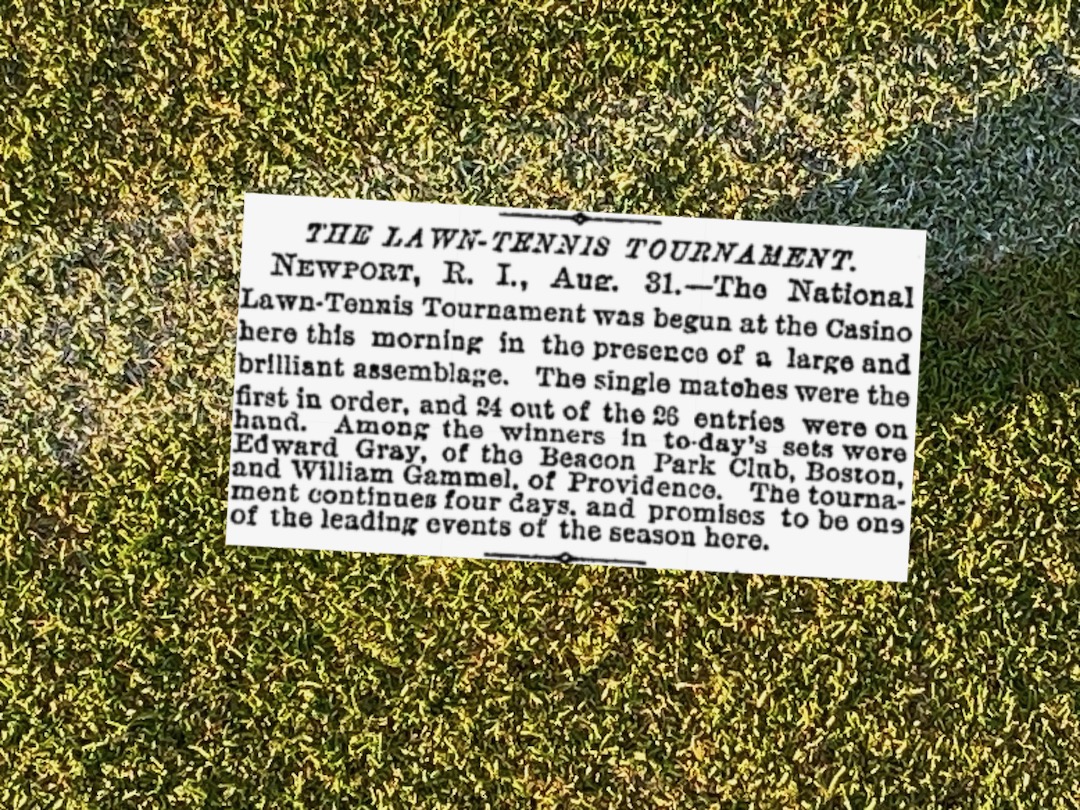In the “History of the Service Let” we discussed that there really isn’t a satisfactory reason recorded as to why the service let even exists. One speculative reason is that the rule is in place because the server already has too much of an advantage with two opportunities at first strike of the ball. This brings us to the obvious question as to why the server is granted two serves at all.
Once again, there really isn’t a satisfactory answer to that question. However, in the course of fruitlessly pursuing the origin of two serves, I came across a related newspaper column in the National Library of Australia. This highlights that it was an active debate topic at least at one point in time.
To put this particular article in context, the year was 1914. This was before World War I and the Great Depression, two events that would forever change the world. To me, the awareness of place and time is magnified by the current ongoing COVID-19 crisis and associated speculation on the long term impacts on life as we know it. 1914 was a happy time just before the precipice of World War I.
The column was printed in The Northern Miner, a newspaper in Australia. It was a debate between Anthony Wilding and Maurice McLoughlin. I suspect that neither man is immediately familiar to modern tennis fans, but both are enshrined in the International Tennis Hall of Fame.
Anthony Wilding was one of the first legitimate stars of tennis, winning the world championship titles on clay, grass, and wood. (You heard me, wood.) He also won an Olympic bronze medal in men’s singles for New Zealand. Tragically he was killed in action during World War I.
Maurice McLoughlin was no slouch himself, winning the US National Men’s Championship in 1913, and repeating the feat in 1914. McLoughlin also served in World War I. Unlike Wilding, he survived the war, but was never able to return to his pre-war tennis form.
Central to the printed debate between the two players was consideration of a proposal to speed up play by eliminating the second serve. For reasons that escape me, the Australian tennis establishment seemed to have been focused on speeding up play for an extended period of time. This fixation continues to this very day, as evidenced by the invention and promotion of Fast4 by Tennis Australia.
Wilding was of the opinion that doing away with the second serve would be generally good for tennis. McLoughlin countered that changing the rule would undermine the most vital principles of the game and lead to its ultimate demise.
One of Wilding’s contentions was that players sometimes struck the first serve “wildly” hoping to win the point by pace alone. McLoughlin countered that no first-class player would attempt such a folly. Another point in the debate centered on whether strenuous serving was too depleting to the server and if the quality of the ensuing points would be diminished. I can only imagine how both players would have reacted to the spectacle that is John Isner.
The article concludes with a profound exposition of the importance of control from McLoughlin. “Control is the secret of the tennis game. Every stoke is a compromise of the elements of speed, placement, and accuracy, and to attempt to interfere with the present system would be to upset the present principles of the game.”
I agree with that sentiment. Additionally, it is a really beautiful description of the game.
- Tennis Origins and Mysteries, Malcom D. Whitman, Dover Publications, 2004.
- “Lawn Tennis. One Serve or Two?” The Northern Miner (Australia), April 25, 1914.
- “Anthony Wilding,” International Tennis Hall of Fame, viewed April 19, 2020.
- “Maurice McLoughlin,” International Tennis Hall of Fame, viewed April 19, 2020.



